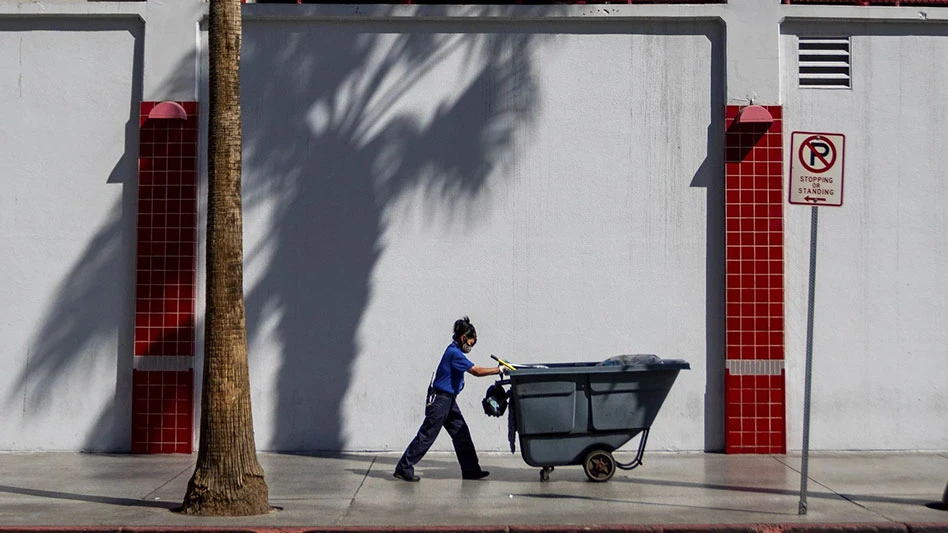
AP Photo | Ty O’Neil
A historic heat wave that has blasted much of the Southwest and other parts of the county this summer has put a spotlight on the least-addressed effects of U.S. climate change: the rising deaths and injuries of people who work in extreme heat, whether inside warehouses and kitchens or outside under the blazing sun.
State and federal governments have long implemented federal procedures for environmental risks exacerbated by climate change, namely drought, flood and wildfires. But extreme heat protections have generally lagged with “no owner” in state and federal governments, says Ladd Keith, an assistant professor of planning and a research associate at the University of Arizona.
“In some ways, we have a very long way to catch up to the governance gap in treating the heat as a true climate hazard,” he tells the Associated Press (AP).
There is no federal heat standard in the U.S. despite an ongoing push from President Joe Biden’s administration to establish one. Most of the hottest U.S. states currently have no heat-specific standards either.
Instead, workers in many states who are exposed to extreme heat are protected by what is known as the “general duty clause,” which requires employers to mitigate hazards that could cause serious injury or death. The clause permits state authorities to inspect work sites for violations, and many do, but there are no consistent benchmarks for determining what constitutes a serious heat hazard, AP reports.
“What’s unsafe isn’t always clear,” says Juanita Constible, a senior advocate from the Natural Resources Defense Council who tracks extreme heat policy. “Without a specific heat standard, it makes it more challenging for regulators to decide, ‘OK, this employer’s breaking the law or not.’”
Many states are adopting their own versions of a federal “emphasis” program increasing inspections to ensure employers offer water, shade and breaks, but citations and enforcement still must go through the general duty clause.
Extreme heat is notably absent from the list of disasters to which the Federal Emergency Management Agency can respond. While regional floodplain managers are common throughout the country, there are only three newly created “chief heat officer” positions to coordinate extreme heat planning in Miami-Dade County, Phoenix and Los Angeles.
RELATED: OSHA launches National Emphasis Program for heat hazards
Federal experts have recommended extreme heat protection since 1972, but it wasn’t until 1997 and 2006, respectively, that Minnesota and California adopted the first statewide protections. For a long time, those states were the exception, with only a scattering of others joining them throughout the early 2000s.
But as heat waves get longer and hotter, the tide is starting to change.
Colorado strengthened existing rules last year to require regular rest and meal breaks in extreme heat and cold and provide water and shade breaks when temperatures hit 80 degrees. Washington State last month updated 15-year-old heat safety standards to lower the temperature at which cool-down breaks and other protections are required. Oregon, which adopted temporary heat protection rules in 2021, made them permanent last year.
Several other states are considering similar laws or regulations.
Arizona Gov. Katie Hobbs recently announced new regulations through the heat emphasis program and declared a state of emergency over extreme heat, allowing the state to reimburse various government entities for funds spent on providing relief from high temperatures.
Nevada also adopted a version of the heat emphasis program. However, a separate bill that would define what constitutes extreme heat and require employers to provide protections ultimately failed in the final month of the legislative session.
The measure faltered even after the temperature threshold for those protections was increased from 95 degrees to 105 degrees. Democratic lawmakers in Nevada are now trying to pass those protections through a regulatory process before next summer.
The Biden administration introduced new regulations in 2021 that would develop heat safety standards and strengthen required protective measures for most at-risk private sector workers, but the mandates are likely subject to several more years of review. A group of Democratic U.S. Congress members introduced a bill last month that would effectively speed up the process by legislating heat standards.
The guidelines would apply to all 50 states and include the private sector and select federal workers but leave most other public sector workers uncovered. Differing conditions across states and potential discrepancies in how the federal law would be implemented make consistent state standards crucial, Constible says.
For now, protections for those workers are largely at the discretion of individual employers, AP reports.
Latest from Waste Today
- Fuzion acquires Elite Roll-Off Services
- Los Angeles County files lawsuit against Chiquita Canyon Landfill operators
- Lux Research questions hydrogen’s transportation role
- Interstate Waste marks 25 years with record growth, strategic acquisitions
- Hauler Hero announces $10M in seed funding
- SECCRA signs up for landfill gas-to-energy system
- Hyster-Yale commits to US production
- VLS Environmental Solutions acquires Virginia waste management services provider





